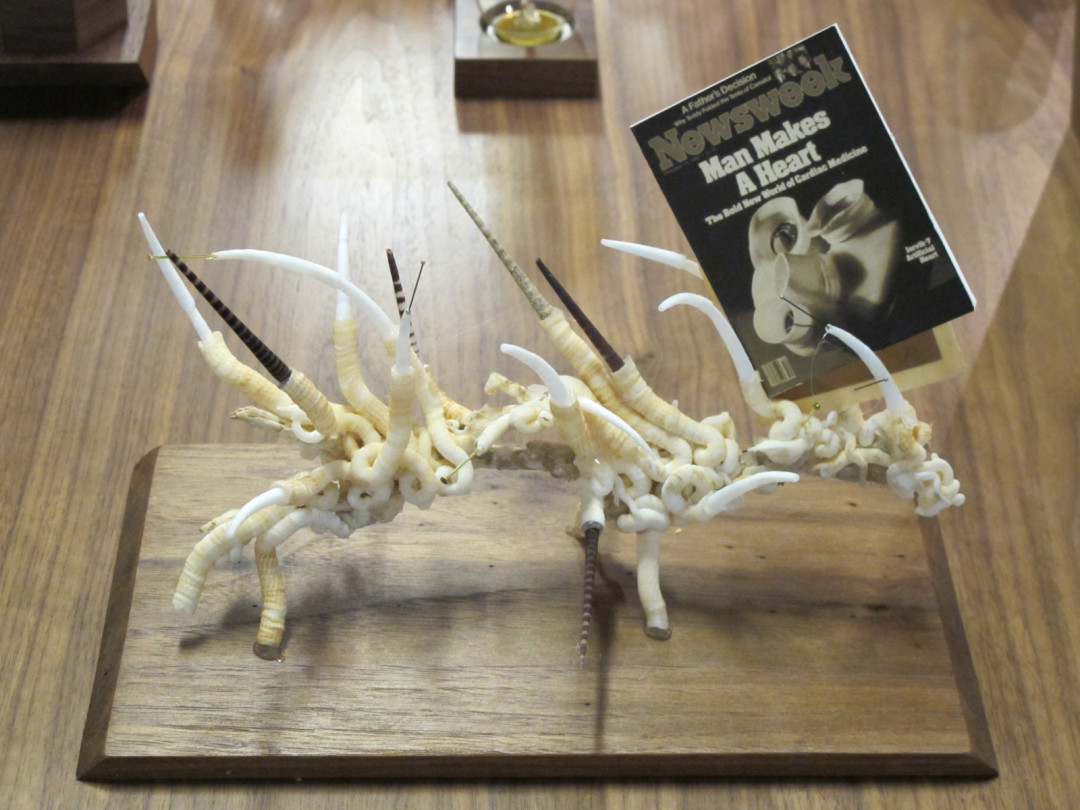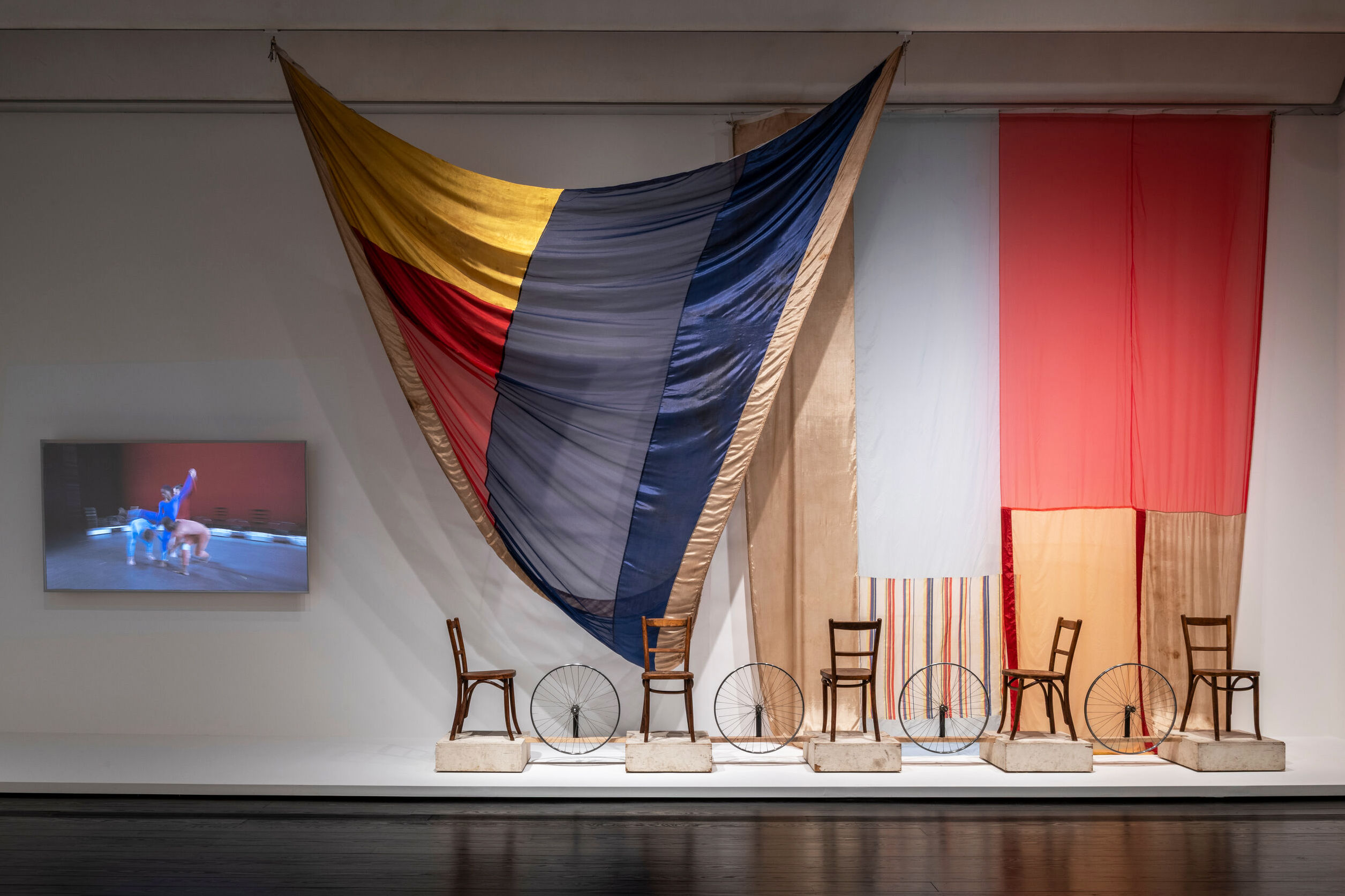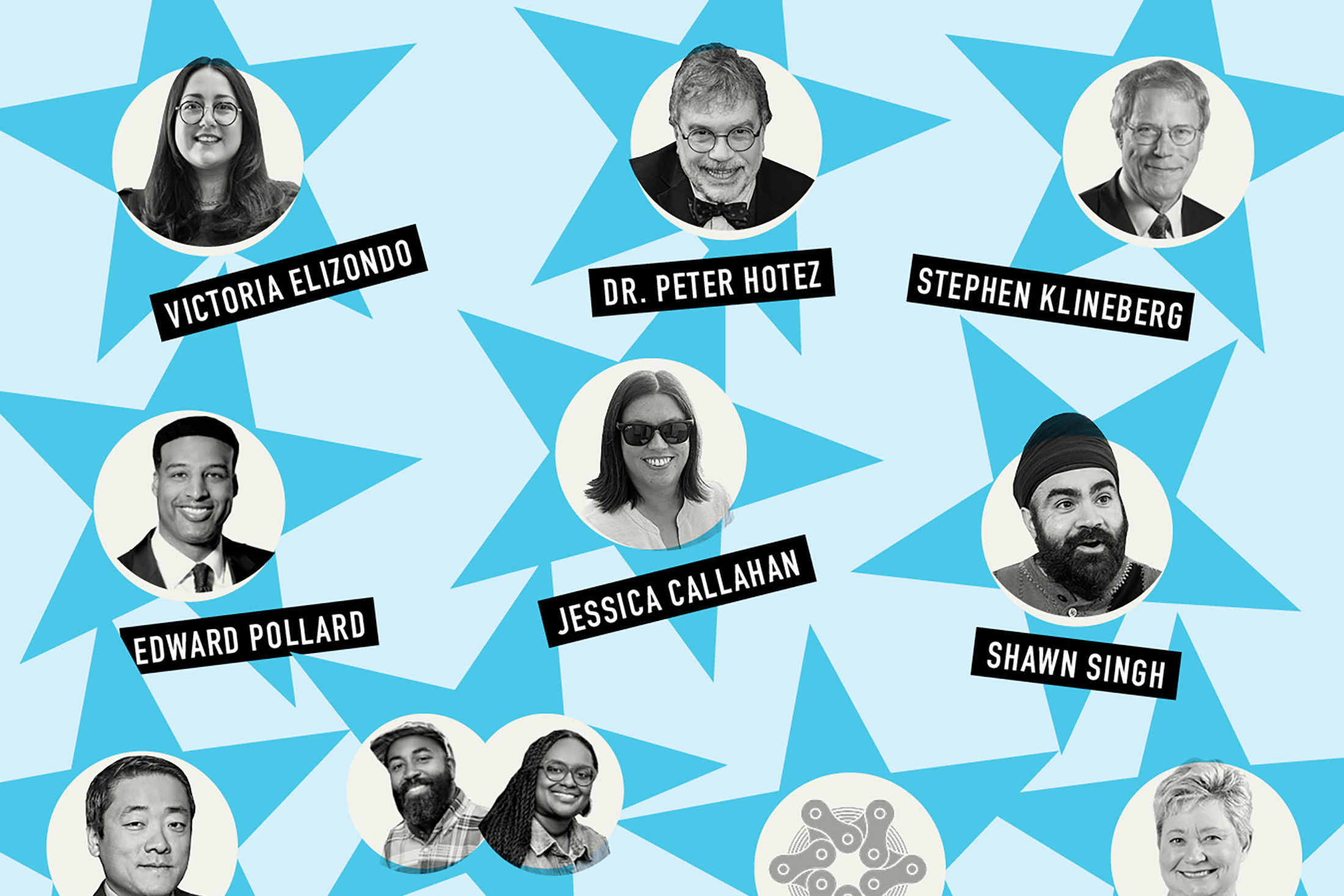This Is Your Brain on Art

Dario Robleto, "Man Makes Heart" (detail, in production), 2014, mixed media
Image: Courtesy of Inman Gallery
Dario Robleto: The Boundary of Life is Quietly Crossed
Thru Jan 11
Free
The Menil Collection
1533 Sul Ross St.
713-525-9400
menil.org
Starting next week, visitors to the Menil Collection’s new Dario Robleto exhibition will have the opportunity to participate in a pioneering medical study. Designed by neuroscientist Jose L. Contreras-Vidal of the University of Houston and Methodist Hospital, the study seeks to understand what happens inside your brain when you look at art. Visitors will have the option of wearing a non-invasive EEG headset that will record their brain activity as they peruse the exhibition. As they exit the exhibition, they’ll give the headsets to researchers to analyze. After collecting data from hundreds of such visitors, Contreras-Vidal will look for common patterns in the visitors’ brainwaves to try to isolate the effects of an aesthetic experience.
Contreras-Vidal designs brain-machine interface systems that allow amputees, the paralyzed, and other disabled people to operate artificial limbs with their minds, using software programs that translate EEG signals, or brainwaves, into physical action. His ultimate goal is to create systems so seamless that people will be able to move their artificial limbs without consciously thinking about it. In order to do that, Contreras-Vidal has to teach his computers how to interpret brainwaves—all kinds of brainwaves, including those related to aesthetic experiences.
“With Contreras-Vidal, he’s doing science that crosses into art level in its beauty, because there’s an emotional dimension to it,” said Dario Robleto, who met the researcher while doing research for the Menil exhibition. They later decided to collaborate on the study, which Robleto, who loved biology as a teenager and did a substantial amount of scientific research for the exhibition, took as a tremendous honor. “The thing that would make me most happy as an artist is to actually contribute real data to a scientist from what I do,” he told me. “That’s a dream of mine. And this show may be the time to do it."
Robleto was surprised to learn from Contreras-Vidal that no neuroscientist had ever conducted a full-scale study of the effect on the brain of looking at art. Although there had been lab experiments with a small number of research subjects, the Menil exhibition provided the opportunity to study hundreds of visitors in a more natural setting.
“What we’re doing here is trying to increase our knowledge about the brain in an ecologically valid environment—a public setting, a museum, with potentially hundreds of people of different ages and genders and interests,” Vidal-Contreras told me. “So the idea is that if we mine this data set we can find patterns of activity that are common to people.”
When Robleto first met Vidal-Contreras, it wasn’t to propose a research collaboration but to ask a simple question—was it possible to determine what somebody was thinking based on a recording of their EEG? The question was prompted by one of the inspirations for the Menil show, the so-called golden record, an actual LP made of gold that was bolted onto the side of NASA’s two Voyager space probes in the late 1970s and launched into outer space. The record, produced by astronomer Carl Sagan and creative director Ann Druyan, included greetings in 59 languages, music from around the world, and an assortment of other sounds.
On a last-minute impulse, Sagan and Druyan decided to include a recording of a human heartbeat and EEG, so Druyan checked herself into New York’s Bellevue Hospital and asked the doctor to record her vital signs. Robleto was fascinated by the idea of sending a recording of the human heartbeat into deep space, and became even more intrigued when he learned that, only a few days before Druyan went to Bellevue Hospital, she and Sagan had become secretly engaged. “It’s not just any heartbeat—it’s a 27-year-old woman who just fell in love,” as Robleto told me.
For the exhibition, Robleto created a “mix tape” LP of historical human heartbeats, including Druyan’s, from the first recorded heartbeat to a recording of the first artificial beatless heart. Visitors can listen to a sampling of those heartbeats on headphones at the Menil. But while working on the show, Robleto continued to be haunted by a lingering question: Would it actually be possible for someone—perhaps an alien lifeform, happening upon one of the Voyager probes—to figure out what Druyan was thinking that summer day in 1977 based on the recording of her EEG imprinted on the golden record?
“When Druyan and Carl sent the brainwave into space, it was crazy—‘Maybe it will work, who knows? But certainly we won’t be around to know,’” Robleto said, imagining their conversation. To see if Ann and Carl were onto something, Robleto told Contreras-Vidal the story of the golden record and asked if Ann was crazy. The researcher didn’t hesitate. No, he told the artist, Ann wasn’t crazy. “He said he didn’t know if it would be in our lifetime, but he said it was definitely possible,” Robleto said. (Although Sagan passed away in 1996, Druyan is still alive, and will make a joint appearance with Robleto at the Menil Collection on September 23.)
That initial conversation led to the new neuroscience study, which is scheduled to begin on Saturday, September 6. “I’m very excited to work with Dario to do this research,” Contreras-Vidal said. “It’s an example of two very different areas working together to advance understanding.”




